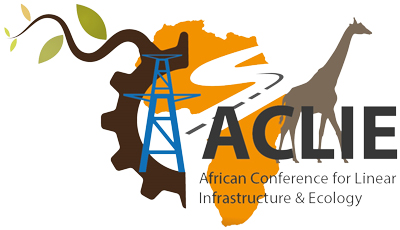ACLIE 2023
Themes & Sub-lenses



conference theme
Imagining the Future
ACLIE 2023 intends to foster and build on African cross-sectoral engagement and the exchange of solutions with a theme of Imagining the Future. With linear infrastructure development continuing apace on the African continent, we are heading towards a future for 1.4 billion people which assumes a net benefit for all.
There will be benefits, however, we have not fully calculated both the costs and benefits of our infrastructural plans and determined how they interact with other continental priorities such as poverty reduction, ecosystem restoration, agricultural productivity, biodiversity conservation, and climate change adaptation. We are left with a series of questions, not answers, but which prompt us to imagination, thought leadership and action as a cross-sectoral community of practice.
What do the unique scenarios for our future look like? Scenario building helps us to diverge to generate insight. Are we diverging enough in how we are thinking about the possibilities for progress? How are we employing our collective imagination to determine the future for ecosystems and linear infrastructure in Africa? What is the future of how we work together? What is the future of how we study infrastructure benefits and impacts? What is the future of how we teach at African universities about linear infrastructure and ecology? And so the questions continue…
Sub-Lenses
DAY 1
The systems lens
In the field of linear infrastructure ecology in Africa, there is a strong research focus on collecting data on specific species affected by e.g. roads, railways and powerlines. What we have not sufficiently focused on yet, due to the field of study still emerging, is how the effects on these species affect other species and functions within ecosystems. We therefore often do not have a complete picture of how ecosystems are being affected and what the true cost of this is to humans in terms of ecosystem service provision.
There is also an opportunity to consider how climate change is changing how ecosystems interact with linear infrastructure in Africa. We need to look at our human systems also and what these mean for whether we can come up with effective and timely mitigation solutions. (There will be more on this on day 3!)
Systems thinking will allow us to expand the set of questions we ask ourselves about linear infrastructure and ecosystems in Africa and therefore expand the potential set of solutions.
DAY 2
The economics lens
Economics and ecology are not as far removed from each other as many might think.
While ecology allows us to understand how ecosystems function and the ways in which resources are generated and used, economics allows us to think about how these resources are allocated. I
n a context in which linear infrastructure development is accelerating, economic analysis which integrates environmental resources is essential for informing decision makers on the true costs and benefits of projects. This allows for decisions upstream in the planning process which maximise benefits to people and nature and minimise costs.
How can we apply this lens into the future?
DAY 3
The pamoja lens
Pamoja means “together” in Swahili and is used here to provide a people-centred lens when considering the interactions between linear infrastructure and ecosystems into the future. How can affected communities and stakeholders come together to provide local knowledge and influence decision-making on linear infrastructure planning so that the environmental benefits that they rely on are sustained? How can we create bridges across sectors so that we can more effectively develop holistic mitigation solutions? How can Africa’s youth participate more meaningfully in solutions development in this space? How should we structure ourselves as a community of practice to work together, share knowledge and lessons learned so that we can scale implementation of solutions which mitigate the impacts of linear infrastructure on African ecosystems?
DAY 4
The innovation lens
The word innovation is a verified buzzword. It is used a lot in our dynamic world of technological change but how are we applying it as we consider how to develop solutions to the impacts of linear infrastructure on African ecosystems?
Drawing from the etymology of the word innovation, the original meaning is restoration or renewal. This has particular, literal resonance for us given that we are in the UN Decade of Ecosystem Restoration.
Therefore, how can we can employ our thinking, technology, indigenous knowledge, and research to restore habitats, corridors and connectivity, and populations of species that have been lost or affected by the impacts of linear infrastructure, and inform the prevention of future ecosystem costs?
Optional landscape visits (22nd-25th)
The context lens
A deep, local understanding of human and ecosystem dynamics is necessary to come up with solutions to linear infrastructure mitigation which are effective and sustainable. This lens will allow us to explore various contexts in Kenya and Africa and think through how to apply mitigation solutions uniquely.
Send a Message
Professional Conference Organisers

IMAGINE. SHARE. LIVE
Connecting people through shared experiences.
africaMASSIVE is a turn-key Meetings, Incentives, Conferences, Events and Leisure Travel company that takes the stress out of your life, so that you can focus on living it!
Call Us
+27(0) 82 304 1538
